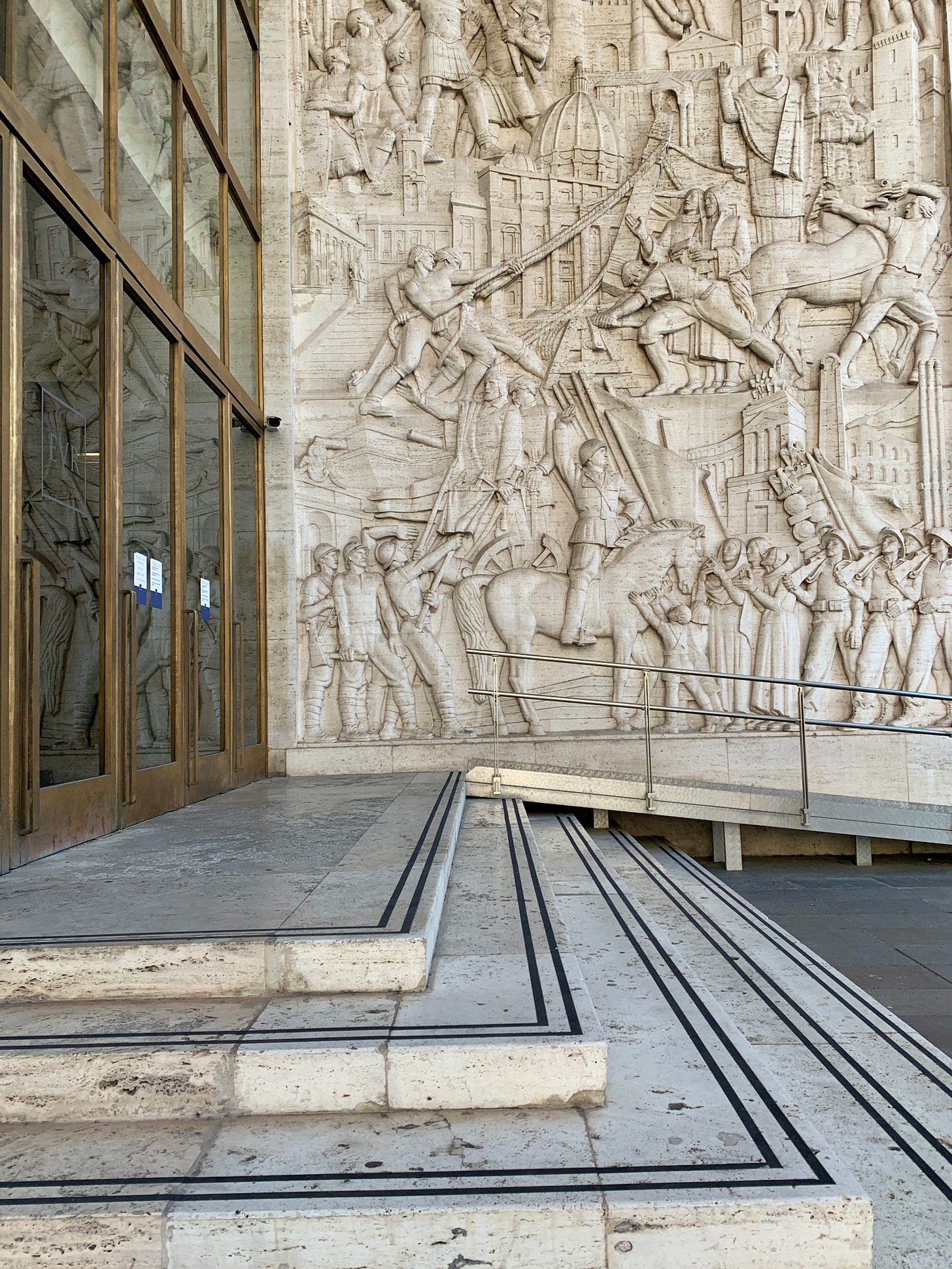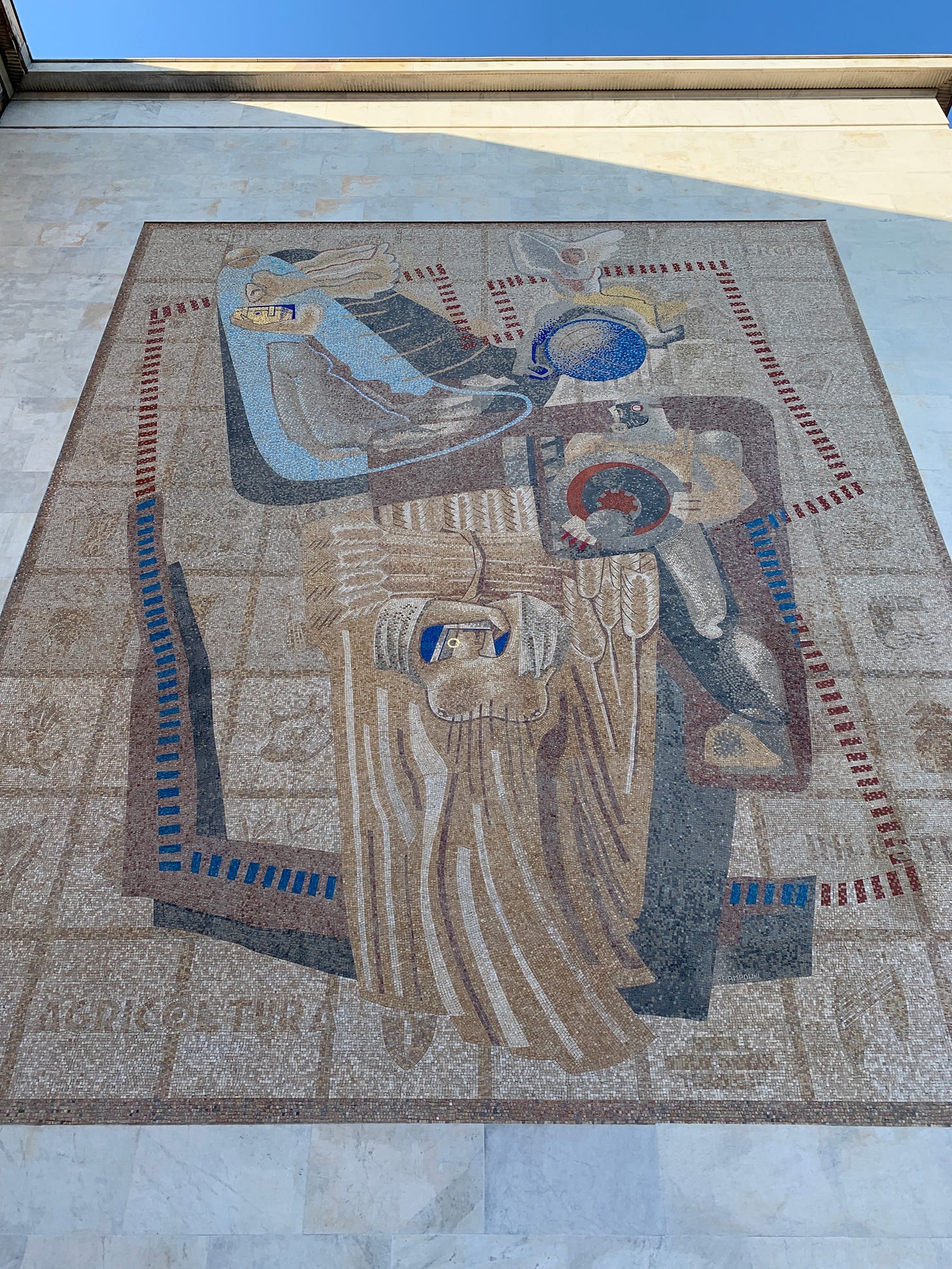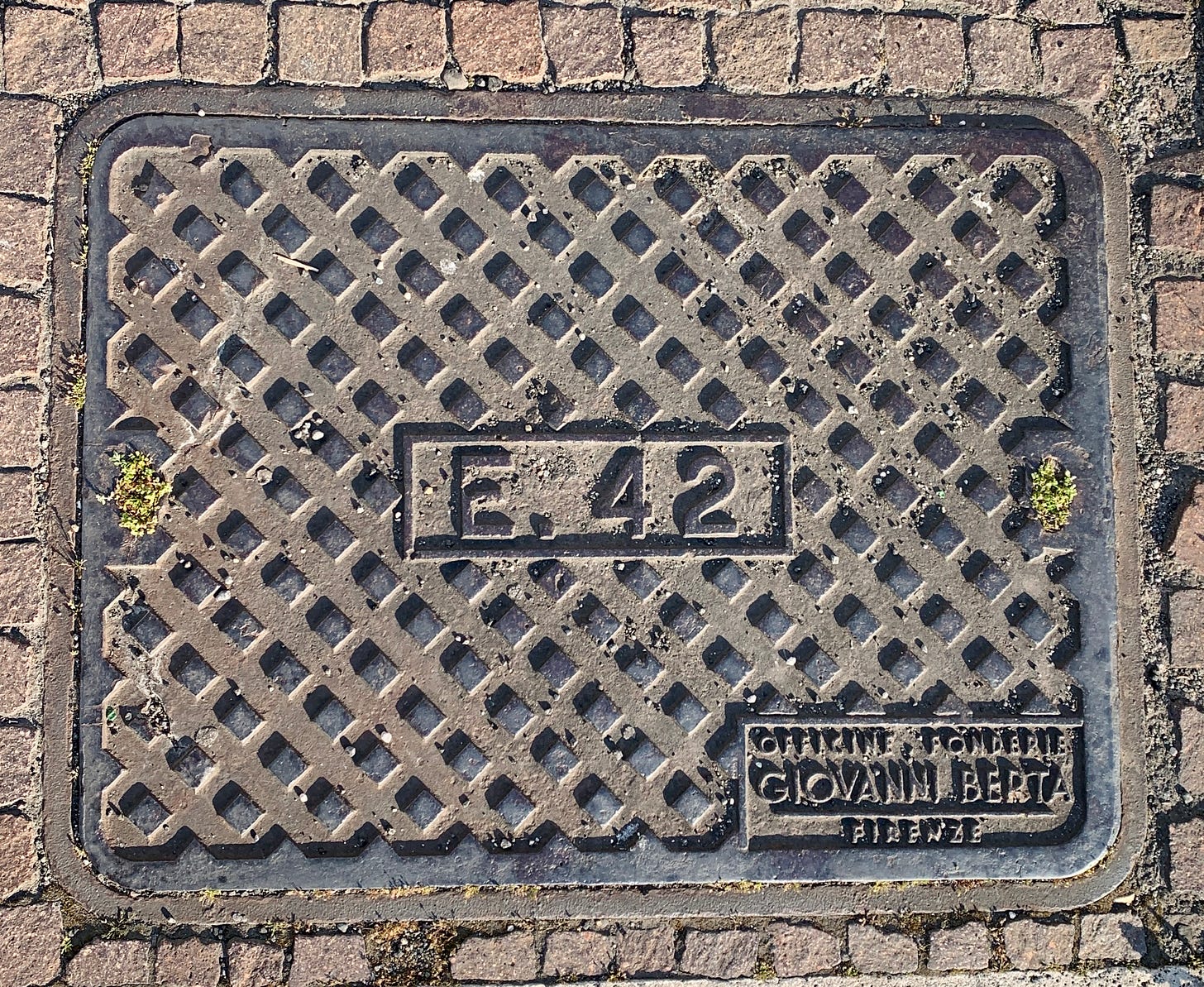Gillian Knows Best mini guide to EUR
Not everything in Rome is ancient (or medieval or Renaissance or Baroque)
Almost a year ago (what is time?) I spent a few hours with my pal Sarah Murdoch in EUR, a neighborhood south of Rome that feels like walking around in an enormous de Chirico painting. EUR is an acronym for Esposizione Universale Romana and it was created by Mussolini as a showcase for the 1942 world’s fair. His plan was to transform Rome into an enduring monument to Italian fascism. There were lots of architects involved but the final plans for the project were completed Marcello Piacentini (You know his work. He’s the guy who designed the Via della Conciliazione, the road that leads to the Vatican that destroyed the Spina, the medieval Borgo neighborhood, and the Grand Palace Hotel on the via Veneto that has some interesting modern frescoes.) WWII put a stop to the plan but the formidable architecture remains.
When I first moved to Rome I didn’t like the spare clean lines of Italian Rationalist architecture. I was dazzled by Rome’s baroque curves and the intricate cosmati floors and moody Caravaggio’s. I am still dazzled by all of those things but I also find this deceptively simple style relaxing with its extreme lack of flourish. EUR is probably not on the agenda for your first trip to Rome but maybe it should be. It’s easy to get there on the metro and it offers a dramatic counterpoint to the more well-known monuments.
What to see in EUR
The Palazzo della Civilta Italiana is more often referred to as the square Colosseum and is now the headquarters of the Fendi fashion empire. Modern legend says that the six loggias each with nine arches correspond to the letters in Benito Mussolini’s name. Wordle in architectural form?
The design inspiration for the Palazzo dei Congressi came from the Pantheon. Inside there are panels painted by the Futurist artist Gino Severini, a fresco by Achille Funi depicting scenes on the origins of Rome, and mosaics by Angelo Canevari. Its function as a convention hall has largely been replaced by the modern Fuksas-designed space, La Nuvola.
The Salone delle Fontone is where Jep Gambardella gives his funeral monologue in the film La Grande Bellezza and in real life is an event space and has mosaics by the futurist artists Severini, Rosso, and Guerrini. Read more about Severini’s contribution here.
The Museo delle Civiltà just recontextualized its collection. It has prehistoric and ethnographic items and examines Italian popular arts and traditions. There is a section devoted to the early Middle Ages that is forever on my to-do list. For stargazers, the Planetarium is nearby.
Find the mosaic Le professioni e le Arti by Futurist artist Fortunato Depero (You know his work too. He designed those cute little Campari bottles) on the side of the Museo delle Scienze.
Rome has two patron saints, Saint Peter and Saint Paul. You know all about Saint Peter’s Basilica but you might not know about the Basilica dei Santi Pietro e Paolo. You have likely seen it on the taxi ride from the airport. It was completed in 1958.
Palazzi dell'INPS e dell'INA were both designed in the late 1930s but were not constructed until after the end of WWII. They mirror the curves of Trajan’s market and are the offices of Italy’s national social security and insurance agencies.
In between the EUR Palasport and Fermi metro stop is the Giardino delle Cascate, a public park with a large artificial lake (that is also used as a water reservoir for firefighters,) a waterfall, and in the spring there are cherry blossoms to see along the passeggiata del Giappone.
I told you about these modern obelisks in last month’s newsletter.
Extra credit: Look for drain covers that are stamped with E42, the original project name for EUR.
Where to eat and drink in EUR
Caffè Palombini is a historic Roman bar that serves morning pastries, midday tramazzinis, and early evening aperitivi to the people who work in the surrounding offices.
Il Gelato di Claudio Torcè is fancy gourmet gelato. I like the salted peanut paired with dark chocolate. For the adventurous, there are savory flavors made with things like habanero peppers and gorgonzola. He has another shop on the viale Aventino just down the street from another rationalist building built in 1938, the one that is now the headquarters to the United Nations Food and Agriculture Organization.
Trecca, a short walk from the San Paolo metro, isn’t too far away for a Saturday lunch or if you visit in the summer you can book a table for the first seating at 8 pm for a quick early dinner.
Further reading and viewing and listening about EUR and fascist architecture
Sylvia Poggioli talks about Italy’s fascist monuments and buildings. This article explores the same themes.
Listen to this podcast about Italian architecture under fascism and this one about the square Colosseum.
Anthony Bourdain visits EUR in this Rome episode.
Browse the photo archives of the E42 project.










Yessssss, love love love the weird corners of suburban Rome. EUR feels like where dystopia was headed but then young happy families moved in <3
We were just talking about wanting to go visit EUR. Great guide!